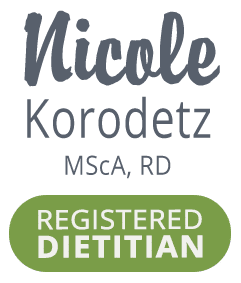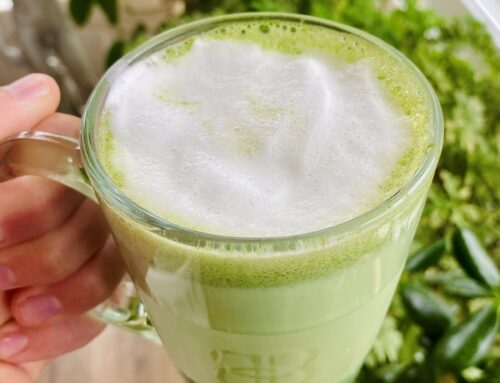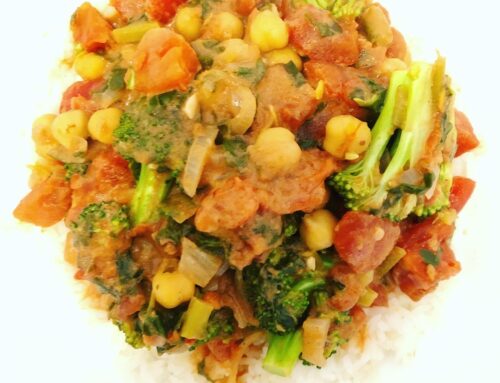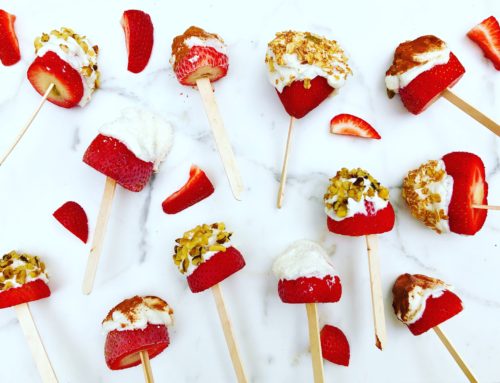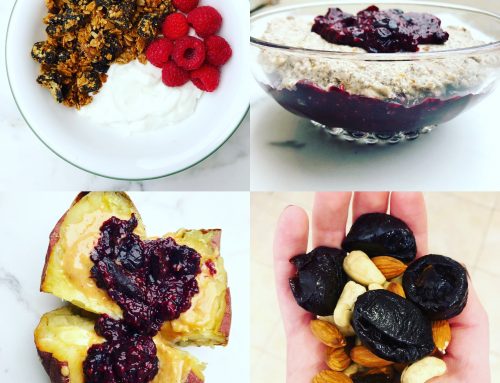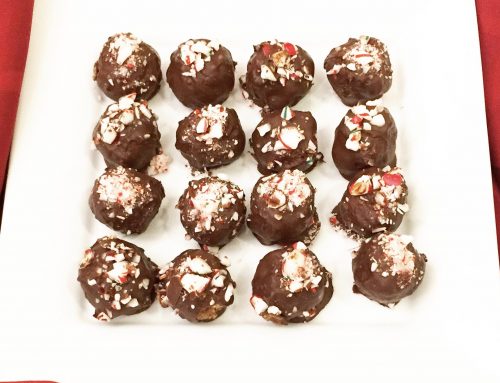The holiday season is fully upon us and that means you have likely already attended a few parties, eaten a couple gingerbread cookies, and have been busy in the kitchen! Hosting a dinner or even preparing a potluck dish can be stressful having to accommodate every guest’s preferences and dietary restrictions. You want everyone to enjoy all of the dishes without making them feel dissatisfied, guilty, or worst of all, sick.
Here, I’ve listed some easy swaps for ingredients that may be used in your holiday recipes (or any time of the year) that are sure to please all of your guests. It is very possible to plan a menu that satisfies everyone, whether they are vegan, celiac, or on a weight loss program.
Healthier Ingredients:
- Mashed banana for oil. Generally, you can replace half the amount of oil with a mashed banana. This will lower the calorie and fat content. It also provides natural sweetness so can help cut back on the added refined sugar.
- 0-2% plain Greek yogurt for sour cream or mayonnaise. This adds some protein and calcium while decreasing the fat content but maintaining the creaminess.
- Potato for cream. Try thickening soups with a potato instead of cream to cut back on fat and add some vitamins and minerals.
- Use other flavouring agents instead of salt. Dried or fresh herbs and spices, lemon juice, vinegars, and oils add lots of flavour without the salt, which will help limit bloating, control thirst, and stabilize blood pressure. Watch out for seasonings that contain salt (Mrs. Dash is a good no-salt brand).
Vegan:
- Offer a non-animal protein dish that incorporates beans, chickpeas, lentils, tofu, or tempeh. With various sauces, herbs, and spices, these dishes can be just as flavourful and satisfying.
- Mushroom gravy for traditional gravy. It would be a shame to make mashed potatoes or vegetables off limits for vegans by dressing it with beef gravy. Mushrooms, nutritional yeast, and tamari make this gravy equally savoury and creamy.
- Avocado for mayonnaise, sour cream or butter. A dairy-free alternative that provides a great source of vitamins, minerals, and monounsaturated fat (the good fat).
- Offer nut, soy, or coconut milk for after dinner coffee, tea or hot chocolate. For recipes that call for cow’s milk or cream, replace with one of these options.
Gluten-Free:
- Flax seed for bread crumbs. If making meatballs, meat loaf, or breading chicken or vegetables, try using ground flax seed instead. You can add herbs and spices to the mix for flavour.
- Gluten-free grains as side dishes. These include quinoa, rice, rice noodles, corn, buckwheat, millet, and certified gluten-free oats.
- Gluten-free flours for baking: coconut, almond, certified GF oat, chickpea, rice, tapioca, cassava. Try this DIY blend to replace all purpose flour.
- Spiralized vegetable noodles for pasta. Not only are they gluten free, they are more nutrient-dense, lower carb, and add colour compared to spaghetti. Best vegetables for spiralizing include zucchini, sweet potato, beets, cucumber, potato, and squash (the long, round vegetables).
Diabetic-Friendly:
- Offer carbohydrates that are high in fibre and low on the glycemic index. Examples include: legumes (beans, peas, lentils), whole grains (barley, quinoa, brown rice, whole wheat pasta, multigrain buns), sweet potato, and yams.
- Cauliflower mash for mashed potatoes. Prepare mashed potatoes as you normally would, but using riced cauliflower instead of potatoes for a lower carb option.
- Whole grain sprouted bread for stuffing. Skip the white bread, which is full of sugar and high on the glycemic index.
- Mixed dishes. Pairing a carbohydrate (e.g. stuffing) with a lean protein (e.g. turkey or chicken breast) and healthy fat (e.g. walnuts, olive oil) helps to stabilize blood sugar.
Nut-Free:
- Use seeds or seed butters in place of nuts or nut butters. Examples include pumpkin, sunflower, hemp, flax, chia, and pepitas.
- Try using pretzels instead of nuts to provide that desired added crunch.
- Roast and spice chickpeas or soybeans instead of nuts.
For someone that has a strict allergy or intolerance, cross-contamination from kitchen appliances, utensils, and other foods can be problematic. Take extra caution when preparing dishes and disclose all ingredients used to these guests.
I understand that you may not want to keep some of these ingredients in your house if you only need them for one occasion. Try buying them from bulk food stores, such as Bulk Barn. That way, you can grab only what you need to prevent waste and additional costs.
I hope that this provides some inspiration for making your holiday dishes friendly for various dietary restrictions. Happy cooking, happy eating, and happy holidays!
